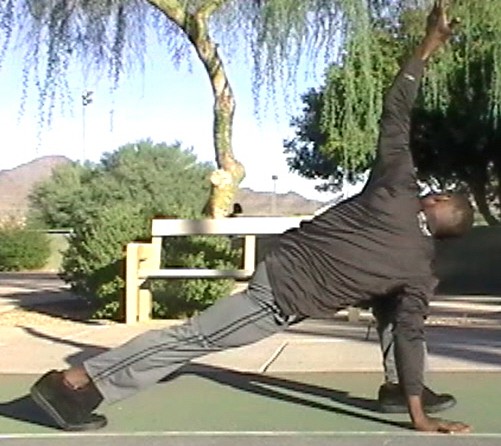Functional physical capacity can be bolstered by regularly engaging the multi-directional capability of the body. The body is capable of moving simultaneously through, at least, two (of the three) planes of motion: frontal, sagittal, and transverse. Exercises that move through more than one plane of motion to do a task will involve multi-joints movements or compound exercises. There is a stabilization, core strengthening component that is stimulated when multiplanar, multi-joint movements are employed. Physical inactivity facilitates bodily degradation of natural functional capacity.

Many do not realize that the body is a multi-directional unit. Bipedalism enables the human animal to turn, bend, reach in many different angles. Movement is a benefit and a consequence of existing within three-dimensional space. The benefit is that there are multiple movement combinations that the body exhibits and utilizes. Accomplishing various physical tasks demands that different physical positions of the body be assumed. The fact that movement, beneficial movement, is avoided by a large portion of the modern populace is a shortfall within modern society . To move well is to live well.
The combinations of frontal, sagittal, and transverse planar movements define the spaces through which basic human actions can occur. The arms reach straight and the torso leans forward and backward and the in the sagittal plane. This plane is also that within which the act of walking is defined. To side-step, lunge or to reach (with the arms, sideways is to move in the frontal plane. The transverse plane is mainly involved with twisting at the waist: yet, oppositional movement that are a combination of upper and lower body motion are facilitated through the transverse plane. Basic human activity is not uniplanar.

To walk is to utilize six joints. Squatting involves three joints. Two joints are mobilized when reaching overhead (discarding slightly rotating and slightly laterally bending the spine). The process of living requires coordination of biomechanical combinations. Day to day activities are enacted because the body is designed perform actions such as reaching, bending, squatting, extending, rotating, pushing, and pulling. Exercises that combine varieties of actions utilize movements that enhance functional capability for the body overall.
Exercises that move through more than one plane and involve more than one joint engage the entirety of the body. Biomechanical stability (balance, per se) is an ability that must be consistently challenged. An ‘older’ person who cannot stand on ‘one foot’ is a person who has succumbed to the notion of age related deterioration. The linkages between the core, reflex mechanisms in the ankle (in particular) and the vestibular system are critical for the exhibiting of balance. Multiplanar, Multi-joint exercises serve to enhance and facilitate biomechanical stability and hence balance.
Modern society promotes the ease of existence (for those who can fully ascribe to this state) or convenience. There is a dearth of physicality amongst all strata of society. Riding public transportation, driving cars, taking escalators / elevators are normal. Many people who shop at supermarkets will not even return their shopping carts to store. Some carts are actually left in the parking lot as opposed to them being taken to the corral. Some people choose to spend much of their free time sitting down in front of a T.V. or consuming food (for the sake of food). Society is less active. The only result can be degradation of physical ability.

Functional physical capacity can be bolstered by regularly engaging the multi-directional capability of the body. The body is capable of moving simultaneously through, at least, two of the three planes of motion: frontal, sagittal, and transverse. Exercises that move through more than one plane of motion to do a task will involve multi-joints movements or compound exercises. There is a stabilization, core strengthening component that is stimulated when multiplanar, multi-joint movements are employed. Physical inactivity lends to bodily degradation of natural functional capacity.
People, a large chunk of people, have decreased physical capacity due to inactivity. Movement and exercises that engage the entire body result in greater biomechanical . . . . . . Compound exercises that move through more than one plane should be part of a consistent exercise regimen. The bodily ability to execute a variety of movements does not exist in a vacuum; it must be utilized and challenged on a regular basis. The use of multiplanar, multi-joint movements supports the functional longevity of the body.

